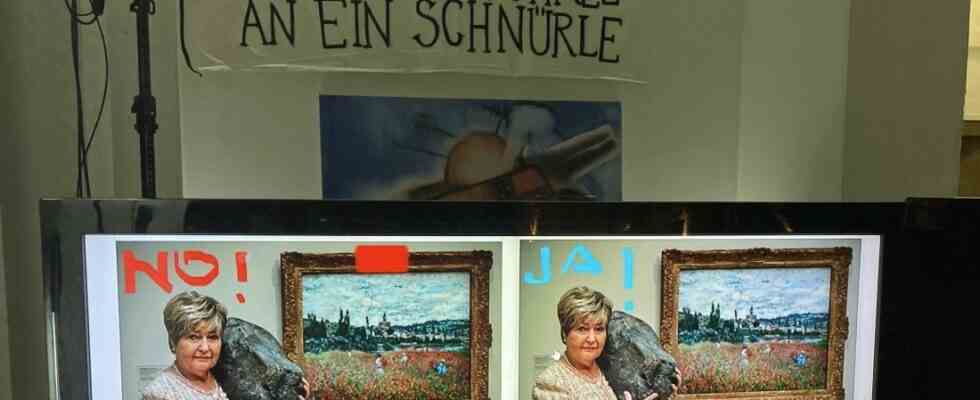It is still light on this April evening in Zurich when the historian Erich Keller stands in front of a painted red tank and says: “Kunsthaus and Bührle belong together like Tell and the crossbow.” There is nothing more to be heard from the Swiss national hero this evening. But it’s about the big, painful issues of the Swiss present, so to speak, to the nitty-gritty – especially for Zurich.
The red tank hangs in a small, bustling gallery not far from Heimplatz. There is not only the Zurich Schauspielhaus, where the uncomfortable Swiss theater maker Milo Rau brings Schiller’s “Wilhelm Tell” to the stage at the weekend. But also the Kunsthaus, including the extension that only opened last autumn. The city has probably never experienced a worse PR debacle than back then, in October 2021: The magnificent Chipperfield building was built primarily to house the art collection of the arms manufacturer Emil G. Bührle. Nobody denies that this is of unique artistic value. But the fact that a publicly financed art museum is now showing these pictures, which an armaments contractor who had become rich with Nazi money bought, often from fleeing Jewish collectors – the Kunsthaus, the city and the canton were suddenly no longer able to explain this convincingly. And so the opening of the extension became a symbol of the historical blindness of those involved – and a disaster for the city.
Just as the Bührle scandal was really heating up, the political theater maker Milo Rau came to town. The 45-year-old quickly realized that this was also about Switzerland’s self-image: “I asked myself: What am I actually doing here?” He read into the debates surrounding Bührle and looked at “all these sham fights”. And then Rau did what he always does: he tackled the matter head-on.
His tell, as we shall soon see, is not just one freedom fighter, but many of them. Last but not least, the small spectacle in the gallery prepares the ground for this freedom show. Milo Rau brings various themes together. There is the historian Keller, who with his book “The Contaminated Museum” has made it absolutely clear to everyone that several Bührle works are suspected of being Nazi-looted art and are being reclaimed by the descendants of the previous owners. One of them is present that evening: Maeva Emden, great-granddaughter of the Jewish merchant Max Emden. She wants to work with the Bührle Foundation to find a “just and fair solution” for a Monet painting that once belonged to her family – so far without success. The woman who grew up in Chile says: “I don’t want another generation after me to have to deal with this picture. I want this wound to finally be closed.” Then there is Irma Frei, 80 years old and an amateur actress in Rau’s “Tell” production. The woman in the pink blazer was a forced laborer in a Bührle factory in eastern Switzerland in the 1960s – another Bührle chapter that has only recently come to light. Frei says: “Nobody, neither from the Swiss authorities nor from the Bührle family, ever apologized for my stolen childhood and youth.”
And Milo Rau has allied himself with another woman: Miriam Cahn, a Jewish-Swiss artist who, because of the Bührle scandal, is reclaiming her paintings from the Kunsthaus. She created the red tank and many other works in the gallery. Also two Non-Fungible Tokens (NFTs), whose auction starts at the end of this dense evening. The money should benefit sans-papiers in Zurich. “So that you can at least try to create justice at the capital level,” says Milo Rau.

